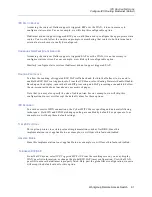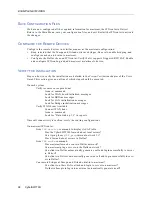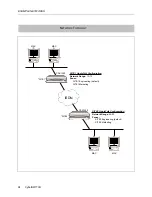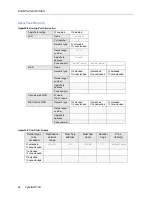
EXAMPLE NETWORKS
104 CyberSWITCH
After the device’s AppleTalk information has been entered, the menu will appear as follows:
We will now continue with the AppleTalk Routing configuration. Return to the main AppleTalk
Routing Menu.
C
ONFIGURING
AN
A
PPLE
T
ALK
S
TATIC
R
OUTE
SITE1 requires one static route. This static route will give SITE1 access to SITE2 and its associated
resources.
To add the static route, select AppleTalk Static Routes from the main AppleTalk Routing Menu. Then,
press 1 to add a static route. You will then be prompted for static route information as shown below:
Use the following information to clarify each of the static route information entries:
•
AppleTalk network type:
This is SITE2’s network type.
•
destination network range
This is the destination network range assigned to SITE2’s LAN segment. As indicated on the
topology worksheet, SITE2’s network range is 45-50.
•
next hop’s AppleTalk address
The next hop is the device that provides access to the network across the WAN. In this case,
SITE2 will provide access to the network across the WAN for SITE1. Because we are using an
unnumbered link, enter 0.0 for SITE2’s AppleTalk address.
Device AppleTalk Configuration Menu: (Device = "SITE2")
1) AppleTalk Address 0.0
2) AppleTalk Routing ENABLED
3) Make calls for AppleTalk data ENABLED
4) AppleTalk Routing Protocol None
Select function from above or <RET> for previous menu:
AppleTalk Network Type:
1) Extended Network
2) NonExtended Network
Enter a network type from the above menu or <RET> to cancel? 1
Enter the destination network range or <RET> to cancel? 45-50
Enter the AppleTalk address of the next hop device. Enter "0.0" if the next hop
is over an unnumbered link or <RET> to cancel? 0.0
Enter the device name of the next hop device
or <RET> to cancel? SITE2
Enter the number of hops for this route or <RET> to cancel? 1
Enter the default zone name or <RET> to cancel? SITE2.Engineering



































